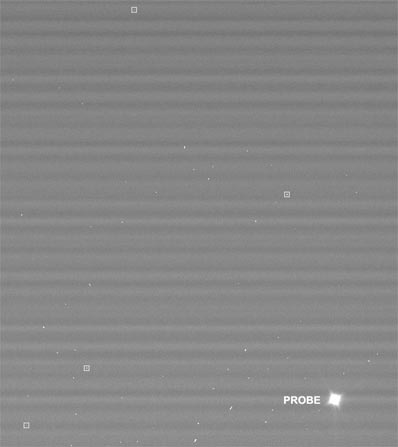
Spaceflight Now +

|

|

|

|

Premium video content for our Spaceflight Now Plus subscribers.

Station status report
 International Space Station program officials hold a status briefing Dec. 9 on the progress of Expedition 10. They discussed the food supply concerns and many other topics. (52min 53sec file) International Space Station program officials hold a status briefing Dec. 9 on the progress of Expedition 10. They discussed the food supply concerns and many other topics. (52min 53sec file)
 Play video Play video

John Young tribute
 A gala at the National Air and Space Museum pays tribute to retiring space pioneer John Young. America's most experienced astronaut is leaving NASA this month after an extraordinary 42-year career. (1hr 24min file) A gala at the National Air and Space Museum pays tribute to retiring space pioneer John Young. America's most experienced astronaut is leaving NASA this month after an extraordinary 42-year career. (1hr 24min file)
 Low | High bandwidth Low | High bandwidth

Shuttle program update
 Space shuttle program manager Bill Parsons, deputy program manager Wayne Hale and integration manager John Casper hold a news conference in Houston on Monday to provide an update on Return to Flight work. (61min 35sec file) Space shuttle program manager Bill Parsons, deputy program manager Wayne Hale and integration manager John Casper hold a news conference in Houston on Monday to provide an update on Return to Flight work. (61min 35sec file)
 Play video Play video

Shuttle work
 This collection of footage illustrates activities underway throughout NASA on the external tank, orbiter in-flight inspection techniques and pre-launch processing work at the Cape. (9min 05sec file) This collection of footage illustrates activities underway throughout NASA on the external tank, orbiter in-flight inspection techniques and pre-launch processing work at the Cape. (9min 05sec file)
 Play video Play video

 Become a subscriber Become a subscriber
 More video More video

|

|

|

|
|

|

Huygens probe shines for Cassini's cameras
CASSINI PHOTO RELEASE
Posted: December 28, 2004
The European Space Agency's Huygens probe appears shining as it coasts away from Cassini in this image taken on Dec. 26, 2004, just two days after the probe successfully detached from the Cassini spacecraft.

Credit: NASA/JPL
Download larger image version here
|
The white boxes shown in figure 1 are known stars. The probe is the brightest item on the lower right. The other dots are artifacts of the camera. Although only a few pixels across, this image is helping navigators reconstruct the probe's trajectory and pinpoint its position relative to Cassini. This information so far shows that the probe and Cassini are right on the mark and well within the predicted trajectory accuracy. This information is important to help establish the required geometry between the probe and the orbiter for radio communications during the probe descent on January 14.
The Huygens probe, built and managed by ESA, will remain dormant until the onboard timer wakes it up just before the probe reaches Titan's upper atmosphere on Jan. 14, 2005. Then it will begin a dramatic plunge through Titan's murky atmosphere, tasting its chemical makeup and composition as it descends to touch down on its surface. The data gathered during this 2-1/2 hour descent will be transmitted from the probe to the Cassini orbiter. Afterward, Cassini will point its antenna to Earth and relay the data through NASA's Deep Space Network to JPL and on to the European Space Agency's Space Operations Center in Darmstadt, Germany, which serves as the operations center for the Huygens probe mission. From this control center, ESA engineers will be tracking the probe and scientists will be standing by to process the data from the probe's six instruments.
This image was taken with the Cassini spacecraft narrow angle camera at a distance of 52 kilometers (32 miles) from the probe on Dec. 26, 2004. The image has been magnified and contrast enhanced to aid visibility.

Credit: NASA/JPL
Download larger image version here
|
In this second image, the bright spots are probably due to light reflecting off the blanketing material that covers the probe. Although only a few pixels across, this image is helping navigators reconstruct the probe's trajectory and pinpoint its position relative to Cassini. This information so far shows that the probe and Cassini are right on the mark and well within the predicted trajectory accuracy. This information is important to help establish the required geometry between the probe and the orbiter for radio communications during the probe descent on January 14.
The Cassini-Huygens mission is a cooperative project of NASA, the European Space Agency and the Italian Space Agency. The Jet Propulsion Laboratory, a division of the California Institute of Technology in Pasadena, manages the mission for NASA's Science Mission Directorate, Washington, D.C. The Cassini orbiter and its two onboard cameras were designed, developed and assembled at JPL.
|

|

|

|
|



